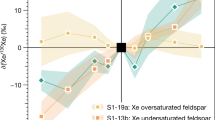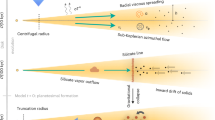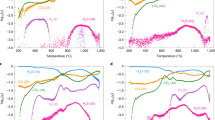Abstract
IN the paper which I communicated to the Royal Society on April 5, I examined the logical conclusions obtained on the hypothesis that the atmosphere of a planet is distributed according to the generalised form of the Boltzmann-Maxwell distribution applicable to a gas in a field of external force, with the further generalisation required to take account of the effects of axial rotation. As regards the effects of the planet's attraction on the distribution of density, the expressions assumed to represent these were of the form now generally accepted by writers on the kinetic theory (e.g. Watson and Burbury), and the modifications required in taking account of centrifugal force were investigated by me in 1894, and are in harmony with the conclusions to which Maxwell's investigations tend. In the aforementioned paper I showed how to calculate a superior limit to the rate at which a planet is losing its atmosphere, and obtained the results that helium would be permanently retained at all ordinary temperatures by terrestrial gravitation and vapour of water by the gravitation on Mars; conclusions with which those deduced by Mr. Cook would appear to be identical, so far as I judge from his letter.
This is a preview of subscription content, access via your institution
Access options
Subscribe to this journal
Receive 51 print issues and online access
$199.00 per year
only $3.90 per issue
Buy this article
- Purchase on SpringerLink
- Instant access to full article PDF
Prices may be subject to local taxes which are calculated during checkout
Similar content being viewed by others
Author information
Authors and Affiliations
Rights and permissions
About this article
Cite this article
BRYAN, G. The Kinetic Theory of Planetary Atmospheres . Nature 62, 126 (1900). https://doi.org/10.1038/062126a0
Issue date:
DOI: https://doi.org/10.1038/062126a0



